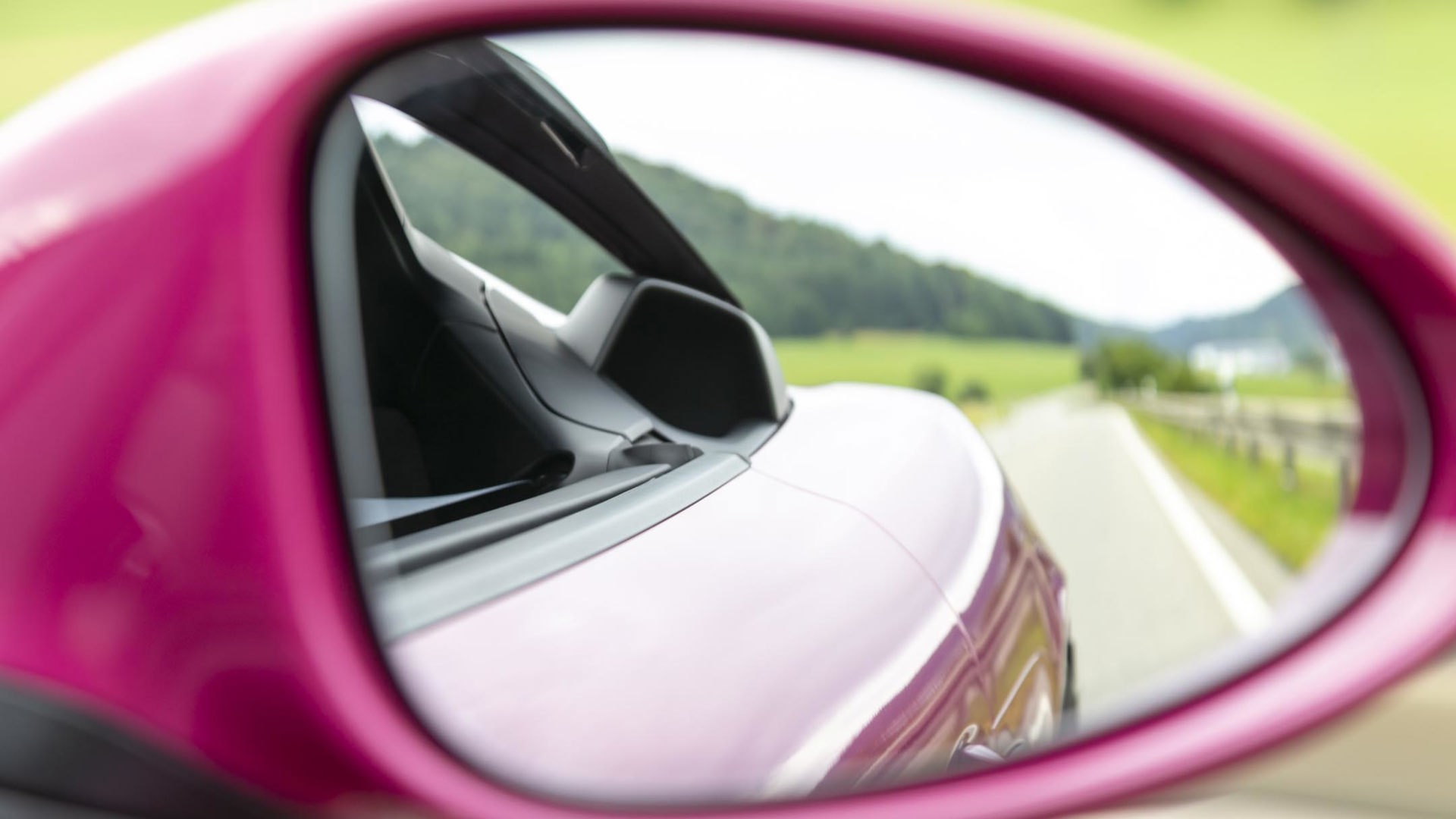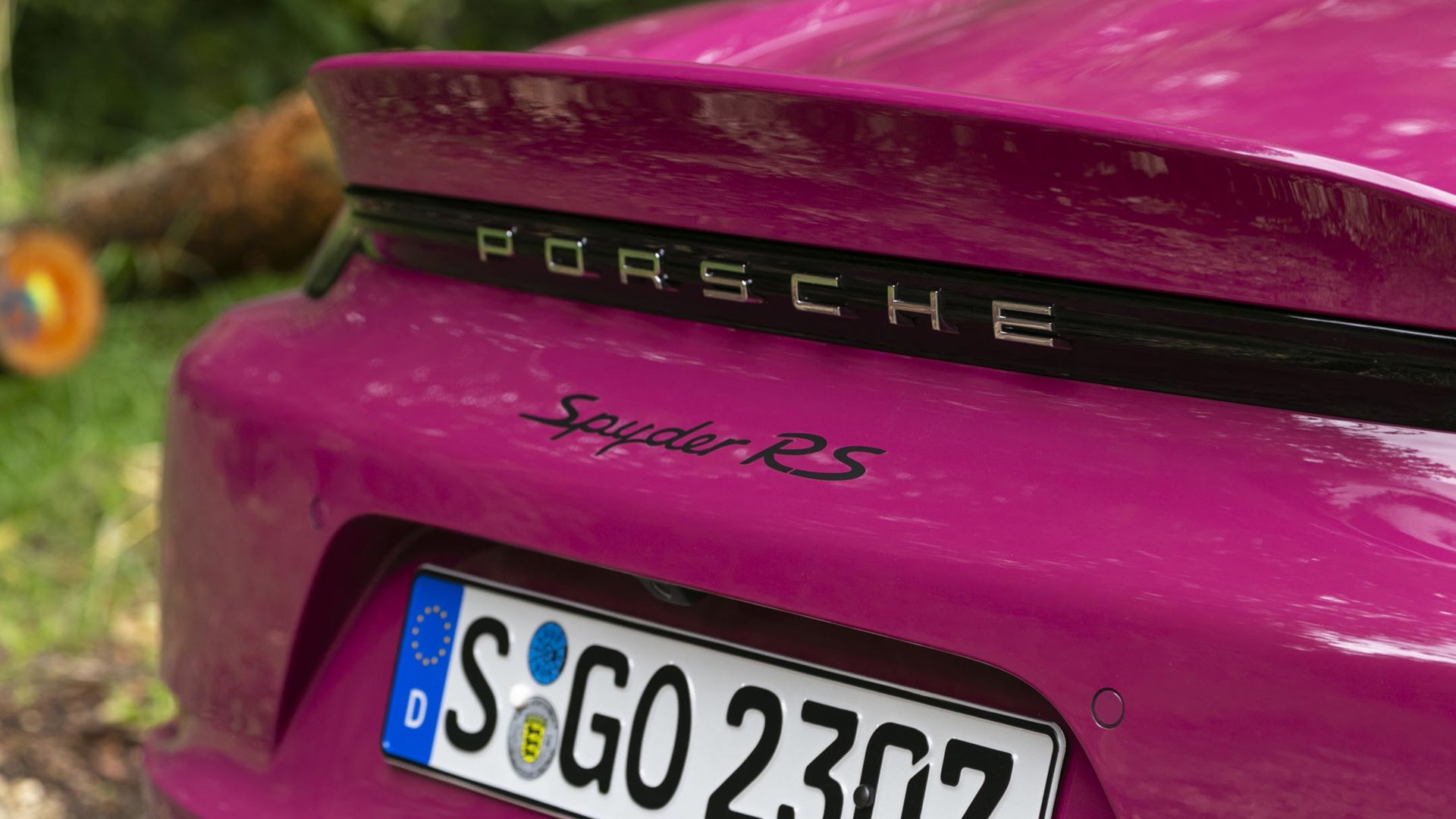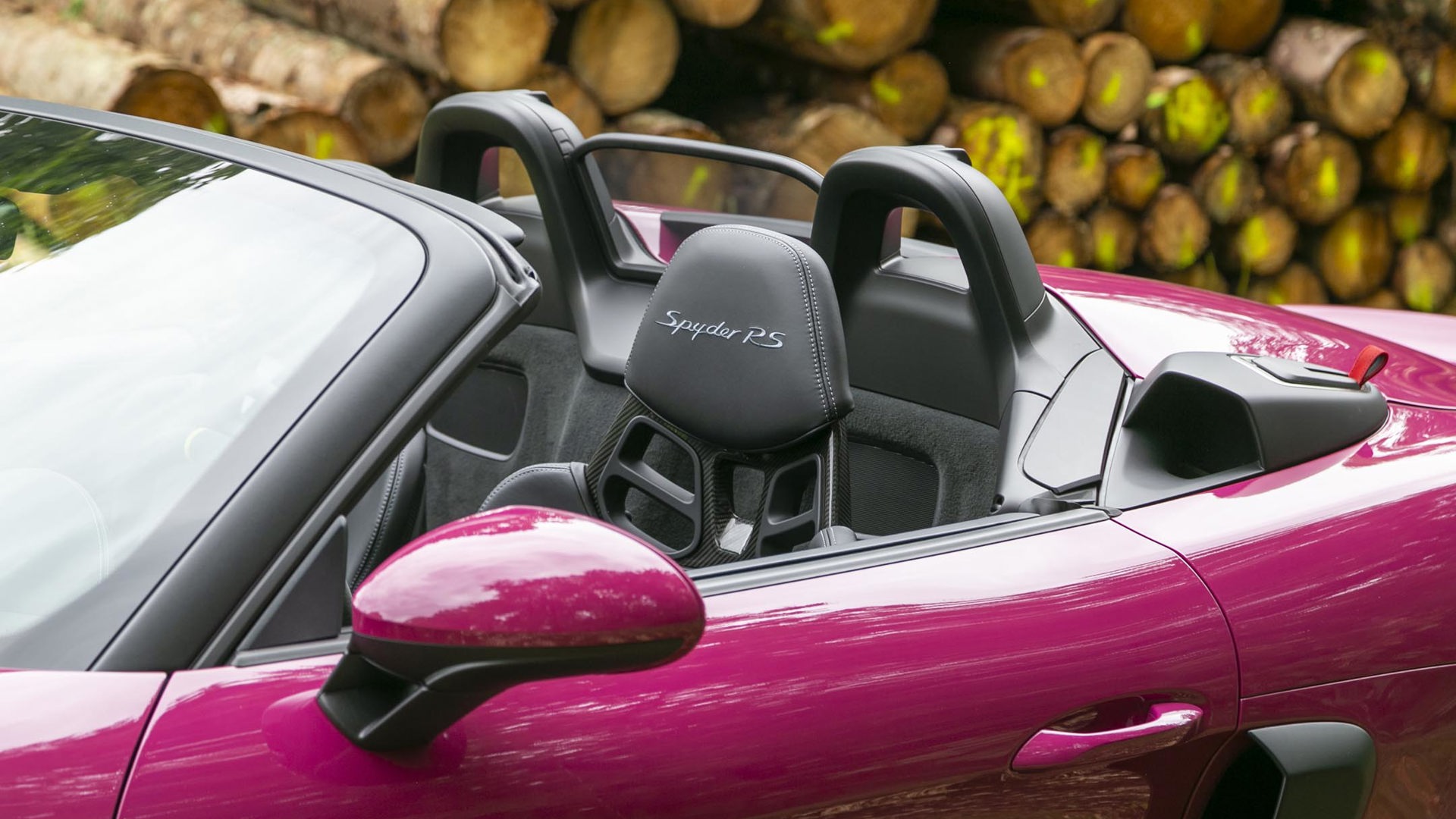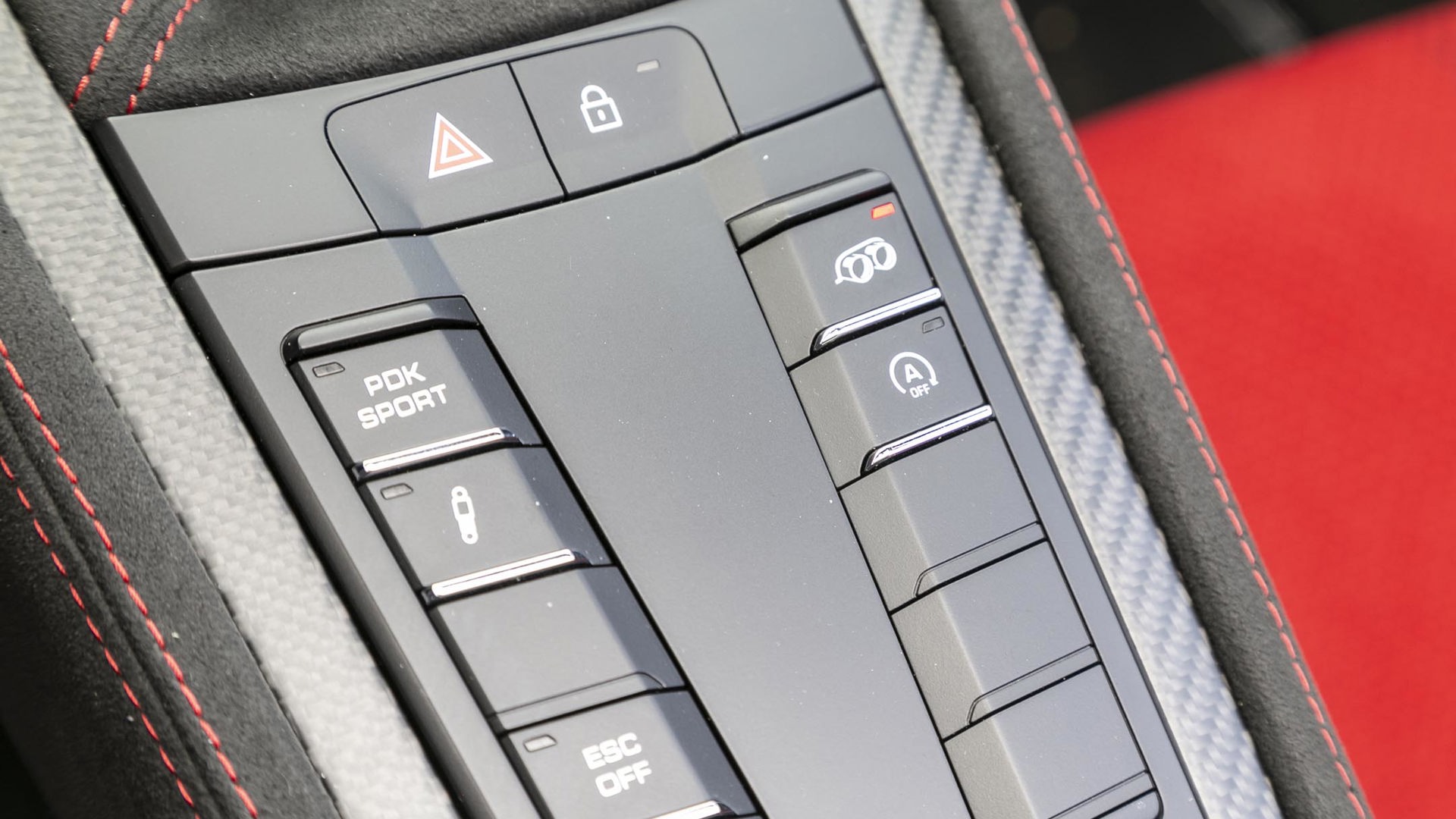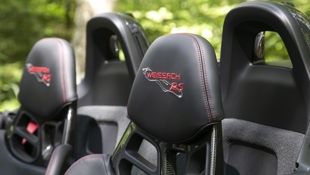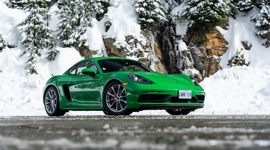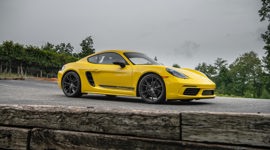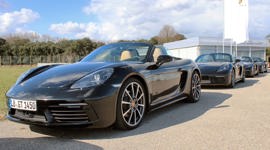It’s been 30 years since Porsche unveiled the original Boxster Concept during what was a challenging time for the brand.
Porsche was showing deficits on its ledger, and its expensive product line was showing its age against foreign competitors. The Boxster – a then-new two-seat convertible concept – was meant to not only excite the brand-faithful with a fun, fresh toy, but also draw in new buyers with a more affordable offering, all in the name of hopefully turning around the company’s financial misfortunes.
It worked, and by the end of the 1990s, things were looking up. The Boxster was adored by the automotive media, with strong sales suggesting the buying public shared that adoration, too. And even with a modest 201 hp in the beginning, driving enthusiasts gushed over the highly engaging experience behind the wheel that was more about feel than fast lap times. Above all else, the Boxster was meant to be fun.
To celebrate the significance of this mid-engine marvel, the 2024 Porsche 718 Spyder RS arrives as the wildest, fiercest, highest performing Boxster variant yet. With electrification set to replace gas power in the next generation 718 Series that includes the Cayman coupe, consider this the ultimate farewell.
A Quick History Lesson
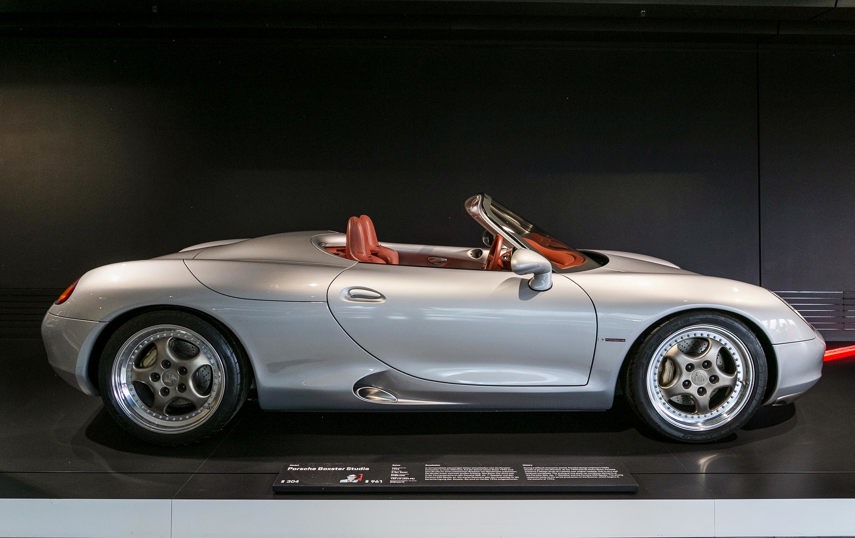
Most of what lies beneath the Spyder RS’s surface is shared with the astounding Cayman GT4 RS, but Porsche’s spokespeople were adamant that while the tin-top version is a true track weapon, this topless car is meant for having fun on the street.
Porsche first used the Spyder name 80 years ago for the 550 Spyder in 1953, and again six years later on the 718 RSK Spyder. In both cases, they were lightweight, pure driving machines, and the theme carries over with this thoroughly modern successor. (Porsche considers its Spyder models true roadsters, which are essentially open-top cars that can offer occasional weather protection, versus a cabriolet that has a more substantial top, making the non-Spyder Boxster a cabrio, not a roadster.)
Affixing or removing the Spyder RS’s top is a fiddly, multi-step affair best managed by two people. Facing unpredictable weather during our drive through southern Germany’s Swabian Alps, we weren’t given the keys to our test cars until we could prove we could attach the top with some proficiency. The fabric toupee that makes up the top portion gets rolled up and stuffed into a cubby just behind the cockpit, and is held in place by a series of clips, snaps and guide wires to keep it taut when stretched over the cockpit.
Without the separate weather deflector that serves as the top’s rear window, the single layer sun sail provides shade and a bit of protection from rain, while still letting the smells and sounds of the outdoors in. Porsche asks owners to limit speeds to less than 200 km/h with the top in place. Lest you presume the top jettisons at high speed like a wig in the wind, we were told with a knowing wink that it successfully stayed put when approaching the RS’s 308-km/h top speed on the Autobahn, but at those speeds the wind pressure puts undue stress on the fabric, shortening its useful life.
While Porsche’s engineering folk boast about the fanatic obsession with weight reduction and how the RS’s top shaves nearly eight kg (17.6 lb) compared to non-RS Spyders, it’s actually a new design because the RS’s taller engine intake requires it. Even so, the weight savings are noteworthy – it’s 16.5 kg (36.4 lb) lighter than the regular Boxster’s top – and along with extensive use of carbon fibre, it helps the Spyder RS come in at a svelte 1,410 kg (3,109 lb).
More impressive still is that it’s actually five kilograms (11 lb) lighter than its Cayman GT4 RS sibling. Simply stash that top at home and it’s lighter still. Meanwhile, those as weight-obsessed at the car’s engineers can opt for the Weissach package that comes with a set of forged magnesium wheels, shaving a further 10 kg (22 lb) while adding nearly $18,000 to the build sheet.
Operatic Engine

Sleek styling, convoluted soft tops, and weight reduction plans are all interesting enough, but it’s the Spyder RS’s horizontally-opposed engine that defines the car. The output figures (493 hp and 331 lb-ft of torque) become inconsequential as the left-hand ignition is twisted. The 4.0L flat-six barks sharply to life before settling into a constant menacing growl. Most modern performance cars do a decent job of hiding their temper when idling and puttering around town, but not the Spyder RS.
Out of respect for the local citizenry, we were asked by our handlers to keep the standard sport exhaust in its quieter mode when passing through the many Swabian villages along our route, and to avoid full-throttle rips when leaving them. In reality, the Ruby Star Neo (read: hot pink) roadster couldn’t have attracted more attention if it was dragging David Hasselhoff naked through the streets with his hair on fire. The twin tail pipes shout at low revs and climb to a spectacular, haunting wail as the engine speed swings toward the 9,000-rpm redline.
Pressing the sport exhaust button doesn’t make the RS sound better, just a bit deeper and louder. The optional Weissach pack features a titanium sport exhaust that adds more rasp to the soundtrack, but the standard sport exhaust sounds damn good.
From inside the cockpit, the RS-specific carbon intakes just behind the headrests howl a siren’s song against which no enthusiast with ears can resist feeding with another boot full of throttle. There was no tiring of the redline concerto even after a few dozen unnecessary redline pulls.
Of course, a lightweight roadster with an engine pulled from a 911 GT3 cup car is going to be bloody quick, and Porsche claims a zero-to-100 km/h sprint time of 3.4 seconds. And while electrification and turbochargers have done a lot to spoil that achievement, making naturally-aspirated machines like this one feel somewhat sluggish by comparison, that doesn’t apply to the 718 Spyder RS. There’s a responsiveness to input and a love for revs here that’s hard to find these days. If this is the end of the line for the brand’s naturally-aspirated engines, Porsche is going out on the highest note possible with this masterpiece.
Leave it to the PDK
With the Spyder RS’s raison d’être being fun on the road, it’s at least a little strange that Porsche doesn’t offer it with a manual transmission. As brilliant as some automatic setups have become, they still lack the engagement that comes with a third pedal. Alas, the brand’s dual-clutch automatic is the only gearbox available here, reportedly due to packaging constraints.
Even still, the PDK is incredibly responsive, and its seven gears are so perfectly matched to this engine that it’s hard to imagine it being possible to have more fun with a manual. Not only is the PDK impossibly quick-shifting, but it’s unerringly obedient, even letting a driver downshift into the rev-limiter for a second under hard braking.
Roadworthy Suspension Tuning
Although the architecture is shared with the Cayman GT4 RS, the spring and damper rates are both tuned more softly here for improved street usability. The German roads tackled during this test lacked the crumbling, frost-heaved, and pot-holed messes encountered back home, so getting a true sense of the standard active suspension management’s compliance wasn’t in the cards. However, of the few imperfections encountered, the Spyder proved unflappable and comfortable.
Torque-vectoring and the standard mechanical limited-slip differential are useful tools when putting power down in the corners, and along with the chassis’s inherent balance and the RS’s quick and highly communicative steering, it makes driving very fast, very easy.
Functional Style

The whole car is set up for a sharpened driver interaction from the perfectly weighted, ultra-quick steering, balanced suspension, instantaneous throttle response, and aggressively bolstered carbon bucket seats. The latter not only keep occupants firmly in place, but they are surprisingly comfortable – if a bit tricky to get in and out of. The seats and some faux suede trim notwithstanding, the interior will be recognizable to anyone familiar with other current-generation 718 Series models.
Like the rest of the lineup, the Spyder’s shape is sleek and sensual, but with its higher performance capabilities comes the need for greater downforce. The GT4 RS wears a large rear wing, while the Spyder RS gets a pronounced ducktail and a smaller front air dam. The hood sports a pair of ducts to aid brake cooling, but the Cayman’s underbody channels and aero vanes aren’t used here. Nevertheless, the Spyder never felt anything but glued to the road, even when being horsed around damp hairpin corners.
Final Thoughts

Three decades ago, Porsche’s mid-engine roadster was born into a tumultuous and changing industry and company. It was a car meant to celebrate Porsche’s history with open-top two-seaters, but also to be a pure, exhilarating driving experience. Most of all, it was meant to be fun for every driver lucky enough to pilot one.
The principles that made that first Boxster such a success have been amplified and fortified with the 2024 Porsche 718 Spyder RS, creating one of those most thrilling automotive experiences available today. As Porsche’s last 718 model with an internal combustion engine, it’s one hell of a send-off. It’s available for order now, starting at $188,800.
















